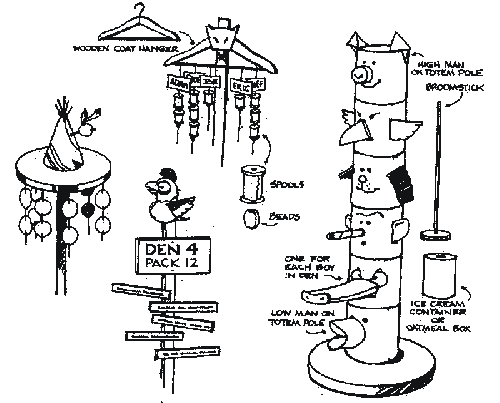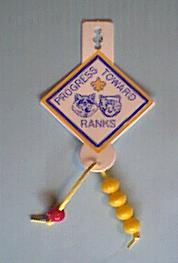DENNER QUESTION
Q:Exactly
what is it the denner should do. Is he just basically a helper during den
meetings? Or is there more to it than that?
A:
As
the den leader, you need to determine what the denner does keeping
in mind that you should assign something that shows some leadership and
responsibility (since this is for the "Be a Leader" requirement.) [Bear
requirement]
For
our den, we asked the denner and assistant denner to arrive early. They
had to check that everyone signed in, give out the beads (we put beads
on the totem for each boy for attendance and uniform), hand out opening
activities, and in general, hand out and take up supplies during the meeting.
They also did the flag ceremony and did clean-up at the end. It was balanced
between the tasks that the boys always want to do (flag, hand out supplies),
and the ones they don't like to do (clean-up, put away supplies), but overall
each boy wanted his turn at it.
Q:
Do
you have the boys elect who should have this position or did you just assign
it?
A:
In our den, we assigned it to the boys on a rotating basis. This gave everyone
who attended regularly their turn to fill this requirement, and made sure
no one was left out. Especially at this age, I feel we should avoid having
the boys elect the denner because they probably are not mature enough to
select on any basis other than popularity.
Also, everyone
should get the chance to do this. We rotated every two weeks, so that every
Scout in our den had two meetings as assistant denner, and two as denner.
If someone missed a den meeting, we gave it to the next Scout on the rotation,
and moved them to the end.

 >
>





